I’ve been making soap for 15 years or more already. Hard to believe that so much time has gone by since my first batches of soap. I had no idea what I was doing and it really looked like it for a while. But I think that’s part of the process. You don’t give up and you keep learning. Learning how to add essential oils to soap is one of those bonus lessons that can save you a lot of money, and really add a lot of life to your creations.
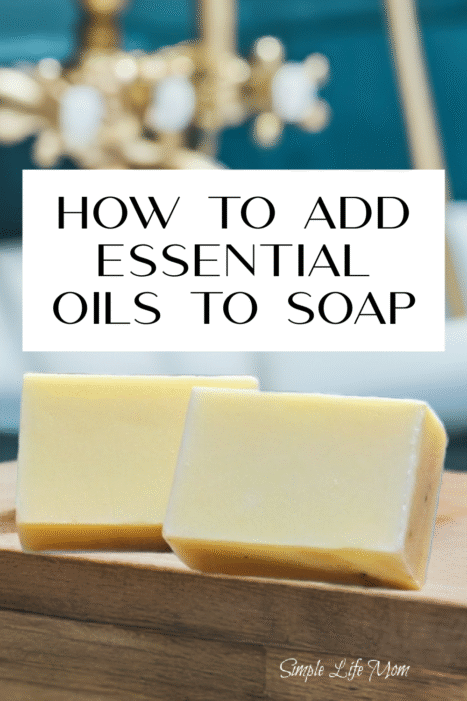
Giveaway Time!
BEFORE WE MOVE ON….I have a giveaway for you! 3 lucky winners will be chosen at random to win a pound of soap, a soap saver, and a lip balm (I do accept entries outside of the US. If you’re a foreign winner, I’ll give you a gift card to my shop for the equivalent of the prize value).
You don’t have to be on social media to win. I give you a number of ways to enter. For some, you can enter many times.
The rafflecopter entry form is below. Enjoy!
Back to Adding Essential Oils to Soap
Whether you’re making cold process, hot process, or just heating a some super healthy melt and pour base (Click here for one I make in my shop), adding essential oils for scenting soap is a wide choice.
I don’t use fragrance oils. Why take all the effort to find and create a organic soap with healthy oils and additions, only to ruin it all with toxic fragrance oils??! What a waste!
Instead, choose essential oils as a 100% natural choice for adding scent to soap.
How to Add Essential Oils to Soap
There is an art to adding essential oils to soap. There are two main things that you need to keep in mind.
- The temerature and timing
- The essential oils blends
Do you add essential oils to the oils or at trace? Do you need to worry about evaporation? Why do some scents fade so quickly?
All of these questions will be answered here. I’ve got you covered. But if you have other questions, always feel free to leave a comment below and I’ll try and help you out.
How to Add Essential Oils to Soap: Temperature and Timing
Essential oils are the oils that come out of the oils of the plant. Yes, you read that right. They are the volatile oils within the oils of a plant’s petals, leaves, peel, or roots.
Therefore, evaporation is a reality. The essential can evaporate when you first add them to the soap and will evaporate over time after the soap is made. The good thing is, it’s not something to stress about because there are small things you can do to minimize the evaporation.
Cold Process Soap Making
First, add essential oils to cold process soap at trace, right before you pour into the mold. If you add them to your oils, there’s a lot more heat that’s happening at the beginning of the saponification process that can damage your essential oils. If you added the oils to the lye water, the high temp would cause some loss, and I’m really not sure about the high intensity of the lye without oil to saponify at that time. So instead, stick to adding essential oils only at trace (Get more info about trace here) after adding honey (Get the inside tips for adding honey here), coloring, etc. Think, last but not least.
Second, I used to soap at higher temperatures, but I prefer around 80 degrees now. This is a low enough temperature that I have a lot less issues with ash (white film over soap) and I’m protecting the essential oils as well.
Again, I don’t really worry about evaporation or damage on a daily basis while making soap but getting the biggest bang for your buck means taking a few little steps that insure you’re getting the most from your oils. After all, the best quality essential oils are definitely not cheap.
Hot Process Soap Making
Take the principles of the above information and apply it to hot processing.
Add the essential oils as one of the last steps you take before pouring the soap into the mold. This means that the saponification process is done, and the temperatures are at a moderate level.
Melt and Pour and Hand Milled Soap Making
Melt and pour soap starts by using a healthy soap base, which is extremely hard to find, if not impossible. This is why I started making my own melt and pour soap base for you to use. Buy it here.
You’ll cut up and then melt the soap base. Mine needs to be sealed under a lid or plastic wrap so that you don’t lose a lot of water to evaporation during the melting process.
When everything is melted and you’re ready to add color and scent, add any coloring (Get natural coloring ingredients here) and then add your essential oils.
This applies to hand milled soap as well.
Hand milled soap is when you take finished soap, whether it’s a botched batch or soap pieces you’ve collected over the past few months, and you cut into small pieces or use a cheese grater to grate and melt. It’s super similar to melt and pour, but instead of an unscented soap bloc, often you’re correcting a botched batch, or you’ll have soap that already has herbs or scent added to it.
If you need to add more essential oils to perk up the scent, add them last minute and blend before scooping the soap into the mold.
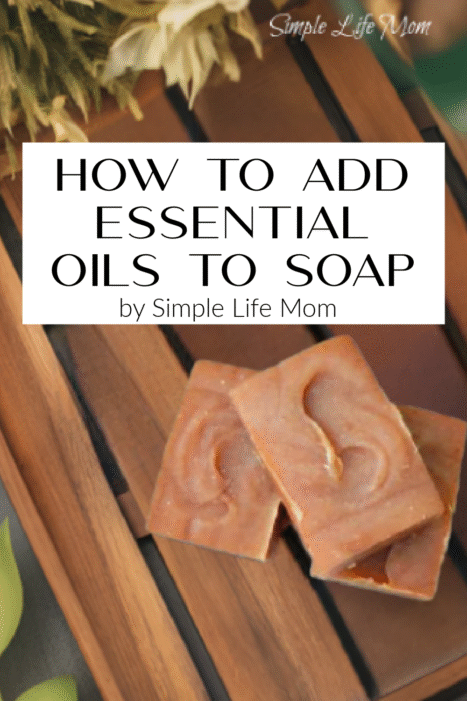
How to Add Essential Oils to Soap: Essential Oil Blends
Combining essential oils to create blends is a tried a true way of making essential oil scents last within your soap.
Essential Oil Amounts
I like to add about 0.35 ounce of essential oil per pound of soap that I’m making.
This means that if you are making a 2-pound soap recipe, you’ll probably add 0.70 ounce of essential oil. Whether you add 1 or 3 or 4 different essential oils, the total amount will add up to about 0.70 ounce for 2 pounds, around 1 full ounce for 3 pounds of soap, etc.
This amount will vary depending on the essential oil that’s being added, but not enough to worry about unless you want to.
Some essential oils are just stronger in scent. We’ll talk about that below. Others are lighter in scent, and you’ll be tempted to add a lot more of them. Instead, let me encourage you to combine them with other essential oils.
Essential Oil Blends
Now that you know how much you’ll be adding, let’s talk about blends.
Essential oils are divided into top, middle, and base notes.
Some examples of top note essential oils are: citrus oils like orange, bergamot, lemon, lime, and grapefruit. Others are neroli, peppermint, lavender, basil, bay laurel, hyssop, sage, and verbena. Some put tea tree, rosemary, thyme into this category, but I’m not sold. I see them as more mid tones.
Examples of middle notes are: more floral scents like, geranium, lavender, ylang ylang, jasmine, tea tree, rosemary, marjoram, cypress, lemongrass, and cardamom.
Examples of base notes are: cinnamon, clove, frankincense, cedarwood, sandalwood, rose, vetiver, patchouli, myrrh, vetiver, and vanilla.
Why is this division important?
It’s very important when creating scent blends. By combining top notes with middle or base notes, you will make your top notes last 3 times longer or more than they would if you added them all by themselves.
For example, combining lemon with lemongrass will give you a great scent level for many months, where just a lemon scented soap may lose its scent within a few weeks.
Try combining orange essential oil with cedarwood or ylang ylang for a synergetic effect, basically getting more out of it than what you put in.
Blending Ratios
Now that you know how to add essential oils to soap, and you know that you need to combine essential oils, how do you know how much of each to add?
If you’re add a top to a middle or base, then you’ll want to add more of the top oil so that it’s not drowned out by the middle or lower note.
If you’re adding a middle note to a base, the same rule usually applies. You will find exception to this though. I listed lavender as a middle note, because that’s the tone it gives, but lavender really drowns out a lot of other base note oils. When combining lavender with patchouli or citrus, the lavender will come through stronger. When combining lavender with vanilla or lemongrass, the lavender seems to take a back seat.
So, there’s no ratio rule that really works. Instead, really use your nose. Add equal amounts lower than the total wanted essential oil and if you feel like you need more of another scent, you’ll have room to add it.
Remember that our noses take in top notes first, so give your nose a second to find the mid or base notes before adding more.
Do you have more questions? Comment below and I’d love to help. Otherwise, let me know what your favorite essential oil blend is!
Enter Below for Organic Soap
3 winners will receive 1 pound of soap, 1 soap saver, and 1 lip balm. You can enter outside the USA for a gift card to my shop for the prize value. Giveaway is from today to Friday night (May 26-May30). No purchase or social media necessary. Enjoy!

I hope you have fun! Thanks for sharing with your friends and family. As a small business, I really appreciate your support.


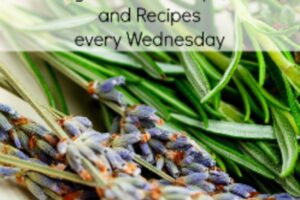
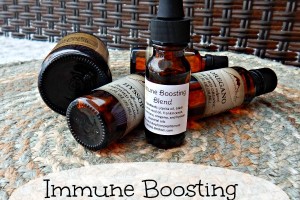


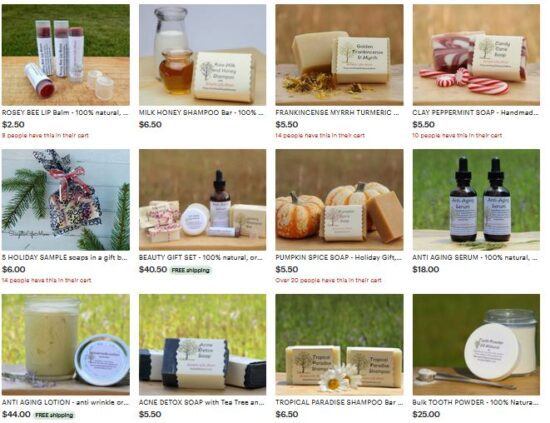
27 Comments
Leave your reply.